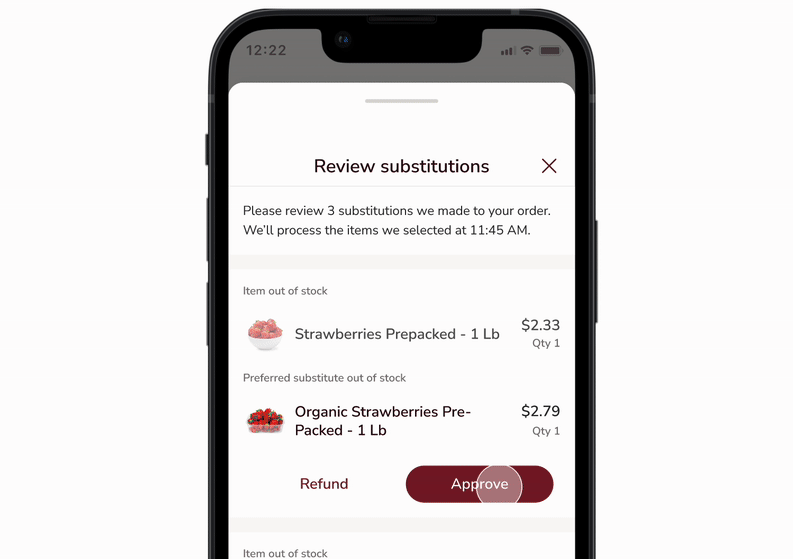Albertsons
Product Designer
Jun '22 — Nov '22
User
The primary user for this experience is our shopper. They plan their order ahead of time, and expect to pick it up or have it delivered the day they need it. It is important for them to know when changes are made to their order, so they can adjust their plans accordingly.
Pain Points
- Our user survey reported users' dissatisfaction around bad substitutions, unprompted substitutions, or substituting more expensive items. Leading to decreased satisfaction, retention, and sales over time.
- Users needed to spend extra time to resolve bad substitutions. Leading to increased customer center calls.
- Users did not have the ability to approve changes made to their order.
Approach
- Competitive Analysis: conducted competitive and market analysis to uncover common trends and patterns to utilize in designing an efficient end-to-end experience.
- Iterative Design: produced rapid iterations for stakeholder validation.
- Test & Learn: created a test plan and prototypes for our User Researcher to run A/B test different iterations.
Challenges
- No time for Research: This was a high initiative project that needed fast turnaround. I utilized competitive analysis with products with similar users to make an informed decision on a solution that would work with our users.
- Restrictive Templates: our notification templates used restrictive formats, which limited our message format. It was important to work with the team to understand the restrictions and update the notifications accordingly.
- Stakeholder Alignment: it was important to implement stakeholder feedback, while accommodating the messaging format.
- Operational Limitations: we had to accomodate in store operations, which affected the experience by not allowing users to change their substitution response.
+ 20%
Inreased from 6.1 to 7.9 measured before and after the redesign.
- 68%
Implementing a self service feature reduced the calls to our customer service center.
+ $600K
Annual savings as a result of effective substitutions and reduced customer calls.
Interactive Prototype
I designed an interactive prototype that our User Researcher could use to test our assumptions during usability testing.
After the user places their order, they have until midnight that night to edit their order. The day of picking, the associate picks their order, and we send out a notification. If a substitution is made to their order, we send a notification to the user based on their preferences. They have 15 minutes to click on the notification, which will bring them into the app and start the substitution experience.
These are the key messages we sent out that lead up to the substitution experience. If the user interacts with them, they navigate to the order details page.
The goal was to allow the user to accept or reject their substitution. I explored iterations that locked in the user’s response, which was required by the business to accommodate in-store operations.





